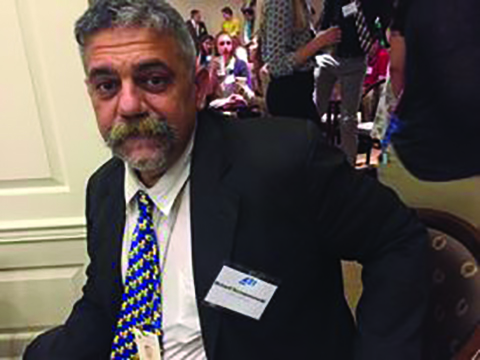When Cardinal-designate Wilton Gregory of Washington is elevated to the College of Cardinals on Nov. 28, 2020, he will be given an honor that is more than 1,700 years old. The rank of cardinal in the Catholic Church dates back to the early fourth century when Pope Sylvester I gave that title to his closest advisors.
These advisors were also given a pastoral responsibility for one of the parishes in the Diocese of Rome, of which the pope is bishop. The title “cardinal” comes from the Latin word, “cardo” which means a hinge or a door. It referred to the door – or address – of the church in the Diocese of Rome to which the cardinal was assigned.
To this day, cardinals remain as close advisors to the pope and automatically become clergy members of the Diocese of Rome or the surrounding area and are still assigned to one of the churches there. This is called the cardinal’s “titular church” because he oversees that church in name only, and is normally not involved in the day-to-day upkeep and operation of that church.
Priests and bishops who are named cardinals are not ordained as such. The Sacrament of Holy Orders includes deacons, priests and bishops. Since cardinals are chosen by the pope, it is he who decrees and bestows that title.
Until early last century, it was possible for a layman to be named a cardinal. However, Pope Benedict XV decreed in 1917 that only priests or bishops could be elevated to the College of Cardinals. The Code of Canon Law now requires that a priest who is named a cardinal must first be ordained a bishop prior to the consistory in which he is elevated to the College of Cardinals.
The world’s cardinals collectively are known as the College of Cardinals, which is led by a dean. Within the college, there are three ranks of cardinals:
• Cardinal Bishops are the senior members of the College of Cardinals who are not only assigned a titular church within the Diocese of Rome, but also assigned a titular diocese near Rome. The group also includes patriarchs from Eastern-rite Catholic Churches. It is from among the Cardinal Bishops that the Dean of the College of Cardinals is chosen.
• Cardinal Priests are churchmen who are generally bishops or archbishops of historic or important dioceses around the world or who hold important posts within the Vatican Curia.
• Cardinal Deacons are priests who have been named to the College of Cardinals after their 80th birthday – and thus cannot vote in a conclave for a new pope – or who are serving in the Vatican Curia.
Until the time of Pope (now Saint) Paul VI and later Pope (now Saint) John Paul II, the number of cardinals was kept at 70 to represent the 70 elders chosen from among the tribes of Israel to assist Moses (Numbers 11:16-30). It was also reminiscent of the 72 men appointed by Jesus to go ahead of Him to every town He was about to go (Luke 10:1). Pope St. Paul VI and Pope St. John Paul II increased the number of cardinals to better reflect the international nature of the Church.
In addition to their jobs as bishop or archbishop of a diocese or holding an office within the Vatican Curia or any other post they may hold, cardinals meet with the pope – called a Consistory – to discuss and advise the pope on important matters of the Church.
Among the most important duties of a cardinal are those that occur at the death of a pope. When the Holy See is vacant, the College of Cardinals is responsible for the day-to-day administration of the Church. They also gather in a conclave to elect a new pope. In 1971, Paul VI decreed that no more than 120 cardinals – all who must be under the age of 80 – could vote for a new pope. However, both Paul VI and John Paul II exceeded that number during their pontificates. At one time during the pontificate of John Paul II, there were 135 cardinals under the 80.
After the Nov. 28 consistory, there will be 128 cardinals under the age of 80 who are eligible to vote in a conclave.
A cardinal wears distinctive red or scarlet vestments and a red zucchetto (skullcap) or a biretta (a ceremonial square cap with three flat projections) to symbolize his willingness to die for his faith, since red can represent the blood of martyrs. During the Consistory when the pope elevates new cardinals, he places a red hat – the biretta – on the head of each new cardinal.
In the 15th century, the zucchetto skull cap began to be used for ceremonial and liturgical occasions. Using the zucchetto to denote clerical rank came into practice. The color of the zucchetto reflects their episcopal order: bishops wear violet, cardinals wear red and the pope wears white.











